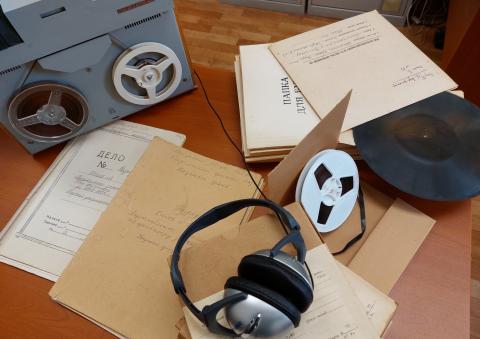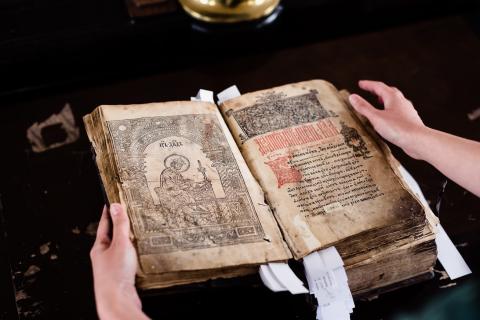Aims and objectives
The ‘Vasile Parvan’ Institute of Archaeology’s photographic archive contains about 12,000 glass-plate black-and-white negatives and positives, 5,000 black-and-white rolls of film negatives, 100 color rolls of film negative, 10,000 colour film-slides, 1,000 aerial photographs, and more than 10,000 black-and-white and colour photographs on paper. The archive also contains a partial card-index, with about 10,000 index-cards. The information provided by the cards is rudimentary and in most cases there is no connection between the registration number on the card and the photographic items. The rest of the archive is inadequately stored, has no inventory, has never been scanned and is in the process of active decay. Rapid action is needed to preserve the collection and to make its contents available for national and international research.
The archive’s importance for the history and archaeology of Romania is immense, providing a unique source of information for archaeological research and monument recording and restoration between 1880 and 1925. Large numbers of archaeological sites and monuments, then surviving across Romania, are represented in a vast array of excavation, exploration and restoration photographs, covering all periods from the earliest farming communities to the pre-industrial centuries of the last millennium. Many of the archaeological sites and landscapes represented in the photographs, along with a host of medieval churches and many villages, were totally destroyed during and after the two World Wars.
The emphasis of the project will be on the photographic material dating from 1880-1925, approximately 4,000 items. Although the archive contains photographs from all over Romania, the majority of the earliest material focuses on the Romanian Black Sea area, a region called Dobrogea, the richest region of Romania in terms of its archaeological heritage. It also used to be the most ethnically diverse region of Romania and until the end of World War I was one of the most rural and arid. Many of the photographs shed light on the ethnic diversity of the region, nowadays hugely different, and on the unaltered landscape of the area, much changed due to the huge communist agricultural programmes of the sixties and seventies, which included erasing to the ground entire villages along with their churches and traditional field systems.
Thousands of archaeological artifacts – pottery, sculptures, metal objects – are also represented, along with other items of major historical importance: objects of religious art, paintings, sculptures and fabrics, many of them subsequently destroyed or lost, sometimes plundered by German, Russian or other troops during the wars that have affected Romania in the past 150 years. The on-site images include extremely beautiful local ethnographic photographs and rural landscape images depicting a world long gone, especially in the Black Sea area, populated by a wide mix of differing nationalities in the period before WWII (Greeks, Turks, Tartars, Italians, Germans, Macedonians, Bulgarians, Circassians, Lipovans, Russians, Jews and Gypsies).
Until 2013 the Institute had no photo-archivist and for more than a century the archive was sadly neglected, moved from one venue to another with the records being kept in totally unsafe conditions. As a result most of the glass-plates are affected by dirt, dust or mould, heat or water; many are cracked or broken. The prints are for the most part in similarly poor condition. None of the material is stored in archival-standard enclosures. In the last two years there have been major improvements at the Institute, including the designation of a special room for the archive, the gathering of most of the photographic material in a single venue, and the appointment of a Curator of the photographic archive.
This project will start to rescue this very important body of images. The plan is to clean and put in standard archival enclosures all of the glass-plates and prints from 1885-1918 and to digitise them, thus ensuring their safeguarding for future generations. The Institute will also provide funding for the permanent exhibition of photographs that is planned to be opened in the last month of the project.
Outcomes
About 5000 photographic items were subject of the team's work and underwent different cleaning and restoration procedures. After the restoration phase, 2157 items were selected for digitisation. Out of these 2157 items, a number of 1420 were glass-plate negatives or positives (with different techniques), the rest being albumen prints or gelatine silver prints. After the digitisation, all these items were packed in photographic archival standard enclosures and boxes, thus ensuring their survival for future generations.
The records copied by this project have been catalogued as:
- EAP816/1 National Museum of Antiquities (1875-1925)
Due to the cyber-attack on the British Library in October 2023, the archives and manuscripts database is currently inaccessible and we are unable to provide links to the catalogue records for this project.






